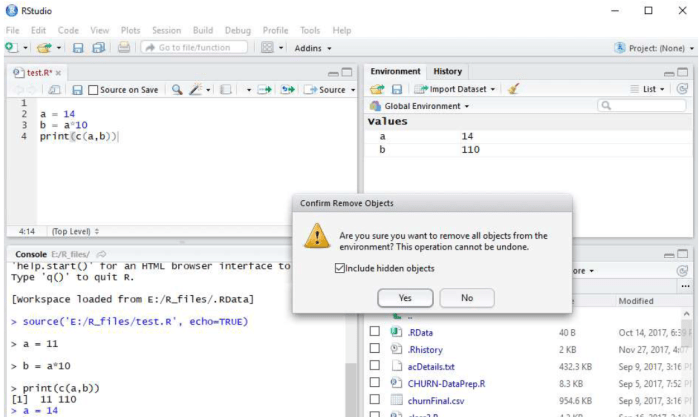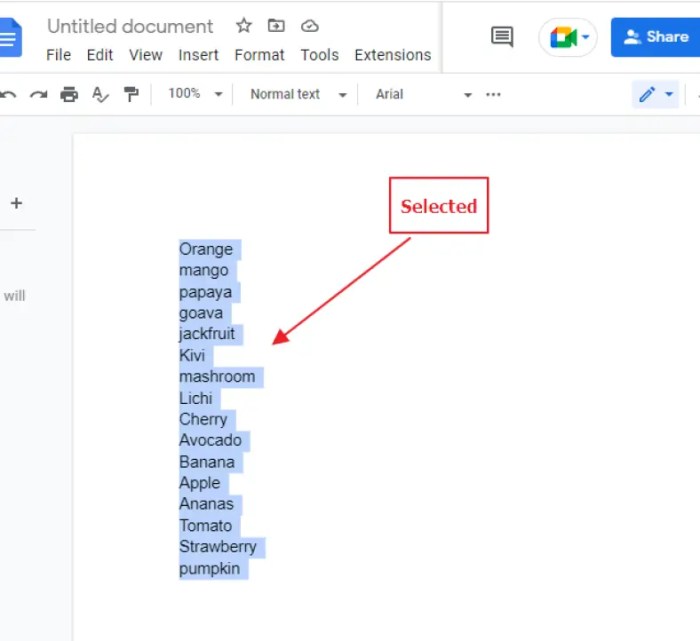
Environment variables play a crucial role in configuring and customizing our computing environments. They provide a way to store and access important settings and configuration data for applications, scripts, and operating systems. Understanding how to manage and clear environment variables is essential for maintaining a stable and secure computing environment.
In this comprehensive guide, we will explore the concept of environment variables, discuss various methods for clearing them in different operating systems, and examine their impact on running processes and applications. We will also cover best practices for managing environment variables, advanced techniques for manipulating them, and their significance in cloud computing and DevOps practices.
Environment Variables
Environment variables are a fundamental aspect of computing environments. They store key-value pairs of data that can be accessed by programs and scripts to customize their behavior or access system-specific information.
Setting environment variables allows you to configure system settings, such as the default path to a particular program or the user’s preferred language. These variables can be accessed within programs using built-in functions or libraries.
Setting and Accessing Environment Variables
- In Unix-like systems (Linux, macOS): Use the
exportcommand to set variables, and theenvcommand to display them. - In Windows: Use the
setcommand to set variables, and theecho %variable_name%to display them. - In programming languages: Most languages provide functions or libraries for accessing environment variables, such as
os.getenv()in Python orSystem.getenv()in Java.
Security Implications
Environment variables can be accessed by any program running on the system, so it’s important to be aware of the potential security risks.
- Sensitive information: Avoid storing sensitive information, such as passwords or API keys, in environment variables.
- Path manipulation: Modifying the
PATHenvironment variable can allow attackers to execute malicious programs by placing them in directories that are included in the path.
Clearing Environment Variables

Clearing environment variables is the process of removing or resetting the values associated with environment variables. This can be useful for various reasons, such as troubleshooting, debugging, or ensuring a clean slate for new processes.
Different Methods for Clearing Environment Variables
There are different methods for clearing environment variables, depending on the operating system being used.Windows:
-
-*Command Prompt
Use the `set` command followed by the name of the environment variable to be cleared, like `set MY_VAR=`.
-*PowerShell
Use the `Remove-Item` cmdlet, like `Remove-Item Env:\MY_VAR`.
macOS and Linux:
-
-*Terminal
Use the `unset` command followed by the name of the environment variable to be cleared, like `unset MY_VAR`.
- u MY_VAR`.
-*Bash Shell
Use the `env` command with the `-u` option, like `env
Clearing Specific Environment Variables vs. Entire Environment
Clearing specific environment variables removes only the specified variables, leaving the rest intact. Clearing the entire environment removes all environment variables, including those set by the operating system or other programs.To clear specific environment variables:
Use the methods described above, specifying the names of the variables to be cleared.
To clear the entire environment:
-
-*Windows
Use the `set` command without any arguments, like `set`.
- i`.
-*macOS and Linux
Use the `env` command with the `-i` option, like `env
Impact of Clearing Environment Variables
Clearing environment variables can have significant effects on running processes and applications. When an environment variable is cleared, its value is effectively removed from the current environment, making it unavailable to any programs or scripts that may rely on it.
This can lead to unexpected behavior or errors in applications that expect specific environment variables to be set. For example, clearing the `PATH` variable can prevent programs from finding executable files, while clearing the `LD_LIBRARY_PATH` variable can cause dynamic libraries to fail to load.
Scenarios Where Clearing Environment Variables is Beneficial
In certain situations, clearing environment variables can be necessary or beneficial. For instance, it can be useful for:
- Debugging: Clearing environment variables can help isolate issues by eliminating any potential interference from external factors.
- Security: Clearing environment variables can remove sensitive information that may have been inadvertently exposed.
- Portability: Clearing environment variables can ensure that applications behave consistently across different systems with varying environment settings.
Best Practices for Environment Variables
Managing environment variables effectively is crucial for maintaining the security and stability of your systems. By adhering to best practices, you can ensure that your environment variables are set, modified, and removed in a consistent and reliable manner.
Environment variables offer several advantages over other configuration mechanisms, including:
- Easy to set and modify: Environment variables can be easily set and modified using simple commands.
- Cross-platform compatibility: Environment variables are supported by most operating systems and programming languages, providing cross-platform compatibility.
- Flexible and dynamic: Environment variables can be modified at runtime, allowing for dynamic configuration changes.
However, it’s important to be aware of the disadvantages as well:
- Security risks: Environment variables can be accessed by any process running on the system, posing potential security risks.
- Limited scope: Environment variables are only accessible within the current process or session.
- Potential for conflicts: Environment variables can conflict with other configuration mechanisms, leading to unexpected behavior.
Setting Environment Variables
When setting environment variables, it’s recommended to follow these best practices:
- Use descriptive names: Choose clear and descriptive names for your environment variables to avoid confusion.
- Set them consistently: Establish a consistent naming convention and syntax for setting environment variables across your systems.
- Use a central location: Store environment variables in a central location, such as a configuration file or system-wide registry, to ensure consistency.
- Test thoroughly: Always test your changes to environment variables to verify that they have the desired effect.
Modifying Environment Variables
When modifying environment variables, it’s important to consider the following best practices:
- Use the same method for modification: If you set an environment variable using a specific command, use the same command to modify it.
- Avoid overwriting: If an environment variable already exists, consider appending to it instead of overwriting it to prevent data loss.
- Document changes: Keep a record of all modifications made to environment variables for future reference and troubleshooting.
Removing Environment Variables
When removing environment variables, it’s essential to follow these best practices:
- Use the same method for removal: If you set an environment variable using a specific command, use the same command to remove it.
- Check for dependencies: Before removing an environment variable, ensure that it is not used by any other processes or applications.
- Test thoroughly: Test your changes to environment variables to verify that they have the desired effect.
Environment Variables in Different Environments
Environment variables are handled differently across various operating systems and programming languages. Understanding these variations is crucial for effective cross-platform development.
Operating Systems
- Windows: Uses the Registry to store environment variables. Accessible via the “Control Panel” or command prompt (e.g., “set”).
- Linux: Stores environment variables in the “/etc/environment” file or in shell scripts (e.g., “export VAR=value”).
- macOS: Similar to Linux, uses shell scripts or the “launchctl” command to set environment variables.
Programming Languages
- Python: Uses the “os” module to access and modify environment variables (e.g., “os.environ”).
- Java: Provides the “System.getenv()” method to retrieve environment variables.
- C/C++: Uses the “getenv()” function to access environment variables.
Implications for Cross-Platform Development
When developing for multiple platforms, it’s important to consider the following implications:
- Variable Names: Environment variable names may differ across operating systems (e.g., “PATH” in Windows vs. “PATH” in Linux).
- Variable Values: Default values for environment variables may vary, leading to unexpected behavior.
- Variable Access: Accessing environment variables in different languages requires platform-specific code.
Advanced Techniques for Environment Variables

In addition to the basic operations, there are advanced techniques that provide greater control and flexibility over environment variables.
Using Shell Scripts and Environment Management Tools
Shell scripts are powerful tools for manipulating environment variables. They allow you to automate tasks, such as setting, modifying, or exporting variables based on specific conditions.
Environment management tools, such as direnv or dotenv, provide a structured approach to managing environment variables. They can load and unload variables from different sources, making it easier to keep track of and manage environment settings.
Creating Custom Environment Variables
You can create custom environment variables to store specific information or settings. For example, you could create a variable called MY_API_KEY to store your API key for a web service.
Modifying Existing Environment Variables
Existing environment variables can be modified to change their values. For instance, you could modify the PATH variable to add a new directory to the search path for executables.
Exporting and Importing Environment Settings
Environment settings can be exported to a file for later use. This allows you to share or transfer environment settings between different systems or users.
Importing environment settings from a file can be useful for setting up a new environment or restoring previous settings.
Using Environment Variables for Configuration Management and Automation
Environment variables can be used for configuration management and automation. By setting specific environment variables, you can control the behavior of scripts, applications, and services.
For example, you could set the DEBUG variable to enable debugging output or the LOG_LEVEL variable to control the verbosity of logging.
Environment Variables in Computing
Role of Environment Variables in Cloud Computing
Environment variables play a crucial role in cloud computing platforms like AWS, Azure, and GCP. They allow you to store and access key configuration settings, secrets, and other information needed by applications and services running in the cloud. By setting environment variables, you can control the behavior and functionality of your cloud resources, manage access to sensitive data, and simplify troubleshooting processes.
Using Environment Variables to Manage Cloud Resources
Environment variables can be used to manage a wide range of cloud resources, including virtual machines, containers, and serverless functions. For example, you can use environment variables to:
- Configure network settings, such as IP addresses, ports, and security groups
- Specify storage locations, such as file paths and database connection strings
- Set memory and CPU limits for your applications
- Control logging and debugging settings
Best Practices for Using Environment Variables in Cloud Computing
To ensure effective and secure use of environment variables in cloud computing, follow these best practices:
- Use descriptive and meaningful names for your environment variables.
- Store sensitive information, such as passwords and API keys, in secure environment variables.
- Use a consistent naming convention across your cloud environment.
- Regularly review and update your environment variables to ensure they are up-to-date.
- Consider using a centralized management tool to manage your environment variables across multiple cloud environments.
Security Considerations for Environment Variables
Environment variables are a powerful tool for managing system settings and user preferences. However, they can also pose security risks if not handled properly.Environment variables can be exploited to gain unauthorized access to systems or data. For example, an attacker could set an environment variable to point to a malicious script or executable.
When a program runs, it may inherit the attacker’s environment variables and execute the malicious code.
Mitigating Security Risks
To mitigate these risks, it is important to harden environment variables and implement access controls. Hardening environment variables involves making them read-only or setting permissions to prevent unauthorized changes. Access controls can be used to restrict who can set or modify environment variables.Additionally,
it is important to be aware of the security risks associated with using environment variables and to take steps to mitigate those risks.
Troubleshooting Environment Variables

Environment variables can sometimes cause issues in applications or scripts. Here are some common problems and troubleshooting steps:
Setting Environment Variables
-
-*Problem
Environment variables are not set correctly.
-*Solution
Ensure that the environment variables are set correctly using the appropriate command or method for your operating system and shell. Check the syntax and value assignments carefully.
Accessing Environment Variables
-
-*Problem
Environment variables cannot be accessed or are not recognized by the application or script.
-*Solution
Verify that the environment variables are accessible within the context of the application or script. Check the scope and visibility of the environment variables, and ensure that they are available in the current environment.
Clearing Environment Variables
-
-*Problem
Environment variables cannot be cleared or removed.
-*Solution
Use the appropriate command or method to clear environment variables for your operating system and shell. Ensure that you have the necessary permissions to modify or remove environment variables.
Debugging Environment-Related Issues
-
-*Problem
Environment-related issues are difficult to debug.
-*Solution
Use debugging techniques to isolate and identify the source of the problem. Set breakpoints, inspect environment variables, and use logging to track the flow of environment-related operations.
Environment Variables and CI/CD Pipelines
Environment variables play a crucial role in CI/CD pipelines by enabling the automation and streamlining of software development processes.
They provide a way to store and manage configuration settings, secrets, and other information that can vary across different environments, such as development, testing, and production.
Integration with CI/CD Tools
- Jenkins: Jenkins supports the use of environment variables through its “Build Environment” and “Global Configuration” sections, allowing users to define and manage variables for different build jobs and the entire Jenkins instance.
- Travis CI: Travis CI provides a “secure environment variables” feature that allows users to store and encrypt sensitive information, such as API keys and passwords, for use in build scripts.
- CircleCI: CircleCI offers a “context” feature that enables users to define and pass environment variables between different stages of the CI/CD pipeline.
Examples of Use in CI/CD Pipelines
- Configuration Management: Environment variables can be used to store configuration settings for different environments, such as database connection strings, API endpoints, and logging levels, ensuring that applications behave as expected in each environment.
- Deployment Automation: Variables can be used to control the deployment process, such as specifying the target environment, the version of the application to be deployed, and the deployment strategy.
- Testing Automation: Environment variables can be used to configure test environments, such as setting up specific test data or defining test parameters, ensuring that tests are executed in a consistent and reproducible manner.
Conclusion

In conclusion, environment variables are a powerful tool for configuring and managing our computing environments. By understanding how to clear environment variables effectively, we can ensure the smooth operation of our applications, maintain system stability, and mitigate security risks. By following the best practices Artikeld in this guide, we can harness the full potential of environment variables and create a more efficient and secure computing experience.






